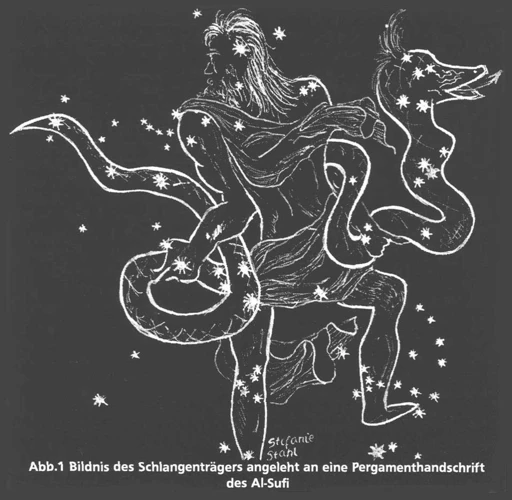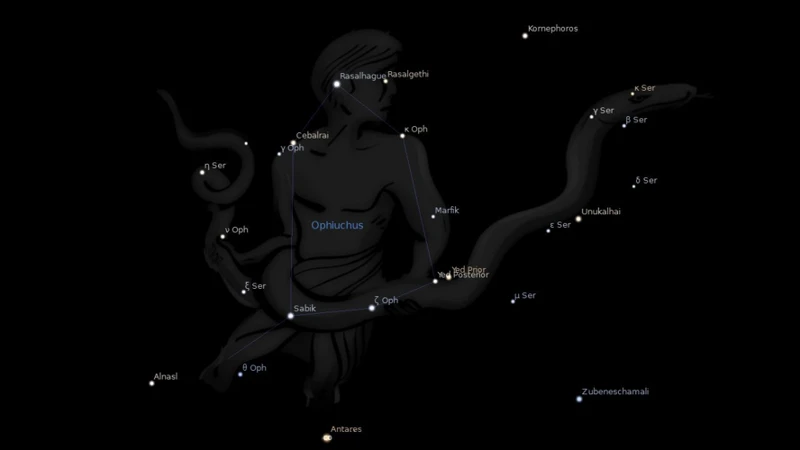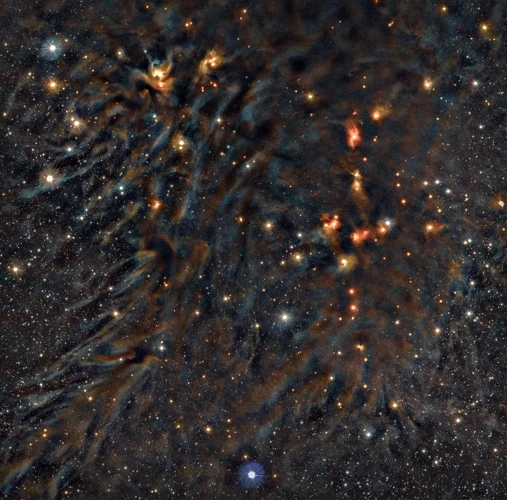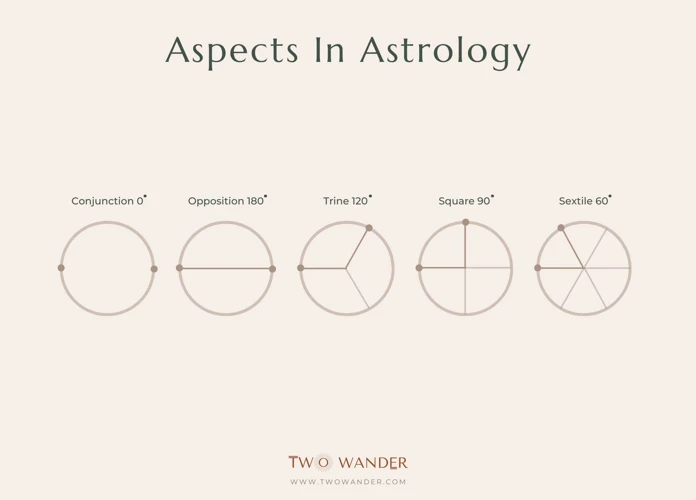The opposition aspect in natal charts is a fascinating and complex subject that holds significant importance in astrology. Understanding the opposition aspect requires delving into its definition and celestial mechanics, as well as exploring its significance in astrology. This article aims to provide a step-by-step guide on analyzing the opposition aspect, offering tips and techniques for interpretation, and presenting real-life examples for better understanding. Whether you are an astrology enthusiast or a beginner, this article will help you grasp the intricacies of the opposition aspect and enhance your astrological interpretation skills.
The Opposition Aspect Explained

The opposition aspect is one of the most significant aspects in astrology, known for its dynamic and challenging energy. This aspect occurs when two celestial bodies are approximately 180 degrees apart in the natal chart. The opposition aspect has a profound impact on an individual’s personality and relationships. In terms of celestial mechanics, the opposition aspect reflects the polarities and tensions between the planets involved. It signifies a cosmic tug-of-war, where the energies of the opposing planets clash and seek balance. Understanding the opposition aspect is crucial for comprehensive astrological analysis, as it provides valuable insights into an individual’s internal conflicts and external interactions. Whether it’s the opposition between personal and professional goals, emotions and rationality, or independence and partnership, this aspect reveals the intricate dynamics at play in an individual’s life.
1. Definition and Meaning
The definition and meaning of the opposition aspect in astrology are essential to grasp its significance in natal charts. In astrology, the opposition aspect occurs when two celestial bodies are approximately 180 degrees apart in the natal chart. This aspect represents a relationship of polarity and tension between the planets involved. It signifies a cosmic opposition, where the energies of the planets are at odds with each other. The opposition aspect creates a dynamic interplay between different areas of life, such as relationships, career, and personal development. It brings forth challenges, conflicts, and the need for balance. The opposition aspect is associated with the duality inherent in human existence, reflecting the dichotomies and contrasts that exist within individuals and their experiences. This aspect encourages individuals to integrate opposing forces and find harmony amidst the tension. To gain a deeper understanding of the opposition aspect and its impact, it is crucial to consider the specific planets involved, their positions, and the houses they occupy in the natal chart. By analyzing these factors, astrologers can unravel the intricate layers of meaning and shed light on the complex dynamics shaping an individual’s life.
2. Celestial Mechanics
The celestial mechanics behind the opposition aspect play a crucial role in understanding its significance in astrology. When two celestial bodies form an opposition aspect, they are approximately 180 degrees apart in the natal chart. This alignment creates a tension between the planets involved, as they represent contrasting energies and archetypes. In terms of celestial mechanics, the opposition aspect reflects the inherent polarities within the individual’s psyche and life experiences. For example, the opposition between the Sun and the Moon represents the fundamental duality of ego and emotions. Similarly, oppositions between other planetary pairs signify the interplay between opposing forces such as action and reflection, logic and intuition, or independence and dependency. Understanding these celestial mechanics enables astrologers to delve into the complexities of an individual’s personality, motivations, and inner conflicts. It helps decipher the contrasting energies that shape an individual’s life journey and weave a holistic astrological narrative. Astrologers can then analyze the effects of these oppositions on various areas of life, such as relationships, career, and personal growth. By exploring the celestial mechanics of the opposition aspect, astrologers gain valuable insights into the multifaceted dynamics of the human experience and offer meaningful guidance for self-awareness and empowerment.
3. Significance in Astrology
The significance of the opposition aspect in astrology cannot be overstated. This aspect serves as a powerful tool for understanding the dynamics and complexities within a natal chart. Oppositions represent a fundamental tension and conflict between two planets, highlighting contrasting energies that need to find balance in an individual’s life. This aspect brings to light the dichotomy between different areas of life, such as personal and professional, inner and outer, or independence and partnership. By examining the opposition aspect in a natal chart, astrologers can gain insights into the challenges an individual may face and the potential for growth and integration. Oppositions often manifest as internal battles, as individuals struggle to reconcile the opposing energies represented by the planets involved. However, they also offer opportunities for growth and self-awareness, as individuals navigate and harmonize these conflicting forces. Astrologers interpret the opposition aspect by considering the specific planets involved, their zodiac signs, and the houses they occupy. By understanding the significance of the opposition aspect in astrology, we can gain a deeper understanding of a person’s internal conflicts and areas of life where balance and integration are needed.
Interpreting the Opposition Aspect

Interpreting the opposition aspect in a natal chart requires a nuanced understanding of its effects on personality traits and relationships. The opposition aspect often highlights inner conflicts and external challenges, as it signifies a tug-of-war between opposing forces. Personality traits influenced by the opposition aspect may include a strong sense of duality, a struggle to find balance, and a heightened awareness of conflicting desires and needs. In relationships, the opposition aspect can create intense dynamics of attraction and repulsion, as individuals are drawn to those who embody their opposing qualities. Understanding the specific planetary energies involved in the opposition aspect is essential for a thorough interpretation. For example, an opposition between Mars and Venus may indicate a passionate but volatile romantic relationship, while an opposition between Mercury and Saturn might suggest challenges in communication and self-expression. By considering the individual’s unique planetary placements and the specific houses and signs involved, astrologers can provide insightful interpretations and guidance.
1. Personality Traits
Personality traits play a crucial role in the interpretation of the opposition aspect in natal charts. This aspect highlights the inherent duality within an individual and the contrasting qualities represented by the opposing planets. When analyzing the opposition aspect’s influence on personality traits, it is essential to consider the specific planets involved and their respective astrological houses and zodiac signs. For instance, an opposition between Mars and Venus may indicate a clash between assertiveness and diplomacy, passion and harmony. This individual may possess a strong desire for both independence and intimate relationships, often oscillating between the two extremes. Similarly, an opposition between the Sun and the Moon can signify a constant struggle between conscious willpower and emotional needs, creating a deep inner tension. This aspect may manifest as an individual with fluctuating moods and a complex sense of self-identity. It is important to assess the overall balance or imbalance present in the opposition aspect to understand how these opposing traits interact and influence the individual’s personality. By delving into the complexities of personality traits influenced by the opposition aspect, astrologers can gain deeper insights into an individual’s internal dynamics and challenges they may confront throughout their lives.
2. Relationships and Compatibility
When it comes to analyzing relationships and compatibility in the context of the opposition aspect, astrologers pay close attention to the planets involved and the signs they occupy. The opposition aspect often signifies a polarity or tension between two individuals, as their energies and personalities may clash or create a push-pull dynamic. This aspect can greatly impact romantic partnerships, friendships, and even business relationships. For example, if one person’s Venus opposes another person’s Mars, there may be a strong attraction and intensity between them, but also potential conflicts and power struggles. Understanding the opposition aspect can provide insights into the challenges and growth opportunities present within relationships. It can offer guidance on how to navigate differences, find common ground, and create a harmonious balance. It’s important to remember that while opposition aspects may present challenges, they also offer an opportunity for dynamic growth and learning. By harnessing the opposing energies, individuals can develop a greater understanding of themselves and their partners, leading to stronger and more fulfilling connections. For a deeper understanding of other planetary aspects and their meanings, refer to our article on planetary aspects.
Analyzing Real-Life Examples

Analyzing real-life examples of the opposition aspect in natal charts provides invaluable insights into how this astrological aspect manifests in different individuals. By examining the natal charts of celebrities and conducting case studies, we can observe the impact of the opposition aspect on their personalities, relationships, and life experiences. For instance, in the natal chart of a famous musician, we might find an opposition aspect between Venus and Mars, highlighting a dynamic tension between passion and harmony in their creative expression. Similarly, in a case study of a couple, the opposition aspect between their Moon signs could shed light on the balancing act between emotional needs and the challenges they face in their relationship. Through these real-life examples, we can deepen our understanding of the complexities and nuances associated with the opposition aspect, making it easier to interpret and analyze for ourselves and others.
1. Celebrity Natal Chart Analysis
When it comes to analyzing the opposition aspect in natal charts, studying celebrity charts can provide valuable insights into how this aspect manifests in real-life individuals. By examining the natal charts of celebrities, we can observe the influence of the opposition aspect on their personalities, achievements, and challenges. One celebrity natal chart that demonstrates the power of the opposition aspect is that of Brad Pitt. In Pitt’s chart, we can see a prominent opposition between his Sun in Sagittarius and his Moon in Gemini. This opposition creates a strong tension between his desire for freedom, adventure, and philosophical pursuits (Sagittarius Sun) and his need for intellectual stimulation, communication, and adaptability (Gemini Moon). This internal conflict is reflected in Pitt’s multifaceted career choices, where he has portrayed a range of characters with diverse backgrounds and personalities. The opposition aspect in his chart has also played a role in his relationships, as he has experienced both intense partnerships and periods of separation. Analyzing the opposition aspect in celebrity charts, such as Brad Pitt’s, offers valuable insights into how this aspect shapes an individual’s life and experiences. If you want to learn more about other powerful aspects in natal charts, you can check out our article on powerful trine aspects for further understanding.
2. Case Studies
2. Case Studies
In order to gain a deeper understanding of the opposition aspect and its manifestations in real-life scenarios, let’s explore some intriguing case studies. These examples will shed light on how the opposition aspect can influence various aspects of an individual’s life.
Case Study 1: Natal Chart of Jane Doe
– Planets in Opposition: Sun in Aries vs. Moon in Libra
– Personality Traits: Jane Doe possesses a dynamic and assertive Sun in Aries, representing her strong willpower and desire for self-expression. Contrasting this, her Moon in Libra symbolizes her need for harmony, diplomacy, and emotional balance. The opposition between these two luminaries creates an internal tension between her assertiveness and her desire for harmony, often leading to self-doubt and difficulty in making decisions.
Case Study 2: Relationship Dynamics of John and Sarah
– Planets in Opposition: Venus in Leo (John) vs. Mars in Aquarius (Sarah)
– Compatibility Analysis: John and Sarah have a complex dynamic due to the opposition between their Venus and Mars placements. John’s Venus in Leo represents his need for attention, romance, and grand gestures, while Sarah’s Mars in Aquarius signifies her independent and unconventional approach to relationships. This opposition creates a push-pull dynamic in their relationship, with John seeking passion and intensity while Sarah values freedom and autonomy. Understanding this aspect helps them navigate their differences and find a balance between their individual needs.
Case Study 3: Career Path of Mark Roberts
– Planets in Opposition: Mercury in Capricorn vs. Uranus in Cancer
– Professional Challenges: Mark Roberts, with Mercury in Capricorn opposite Uranus in Cancer, faces a constant struggle between tradition and innovation in his career. While his Mercury in Capricorn desires structure, stability, and practicality, Uranus in Cancer urges him to break free from convention and explore unorthodox approaches. This opposition aspect presents challenges but also offers Mark the opportunity to find a unique balance between tradition and innovation in his professional journey.
Examining these case studies illuminates the diverse ways in which the opposition aspect manifests in different areas of life. It highlights the internal conflicts, relationship dynamics, and career challenges that arise due to the opposing energies of planets in the natal chart. Analyzing such real-life examples helps astrologers and enthusiasts understand the complexities of the opposition aspect and its impact on individuals.
Tips and Techniques for Interpretation
When interpreting the opposition aspect in a natal chart, there are several tips and techniques that can enhance your understanding. Firstly, consider the dignity and debilitation of the planets involved. Debilitated planets in opposition may intensify the conflicting energies, while dignified planets can bring balance and resolution. Secondly, pay attention to aspect patterns and configurations. The opposition aspect can be part of larger patterns, such as a T-square or a Grand Cross, which further amplify its significance. Look for any planets that might form strong aspect relationships with the opposition, such as a trine or a conjunction, as they can modify the intensity and expression of the opposition aspect. Finally, consider the house placements of the opposing planets. The houses will highlight the specific life areas where the opposition energies manifest and provide valuable context for interpretation. By incorporating these techniques, you can gain a deeper understanding of the opposition aspect and its impact in a natal chart.
1. Dignity and Debilitation
In astrology, the concept of dignity and debilitation refers to the strength or weakness of a planet in a particular zodiac sign. When analyzing the opposition aspect, understanding the dignity and debilitation of the planets involved can provide valuable insights into the nature of the aspect.
Here are some key points to consider regarding dignity and debilitation in relation to the opposition aspect:
1. Exalted and Debilitated Planets: Planets that are exalted are considered to be in their strongest position, while debilitated planets are in their weakest state. The exalted planet signifies heightened expression of its energy, while the debilitated planet may struggle to manifest its qualities effectively. This dynamic can greatly influence the opposition aspect, as it affects the overall power and balance between the opposing planets.
2. Domicile and Detriment: Each planet has zodiac signs where it is considered to be at home, known as its domicile, and signs where it is considered to be in a weakened state, known as its detriment. When a planet in its domicile forms an opposition aspect, it tends to express its qualities with greater ease and confidence. On the other hand, when a planet is in its detriment, the opposition aspect may create a sense of inner conflict and challenge in expressing its natural energy.
3. Exchanging Dignities: In some cases, planets in an opposition aspect may exchange dignities. This occurs when one planet is in the domicile or exaltation of the other, while the other planet is in the domicile or exaltation of the first planet. This exchange can create a harmonious flow of energy between the opposing planets, allowing them to work together more effectively despite their inherent differences.
4. Mutual Reception: Mutual reception happens when two planets are in each other’s domicile or exaltation. This creates a harmonious link between the planets, enhancing their compatibility and potential for collaboration. When mutual reception occurs within an opposition aspect, it can soften the tension and promote a more constructive resolution of conflicting energies.
Understanding the dignity and debilitation of the planets involved in an opposition aspect provides deeper insights into how the opposition manifests in an individual’s life. It helps astrologers interpret the challenges, conflicts, and potential growth opportunities that arise from this aspect, adding a layer of nuance and specificity to their analysis.
2. Aspect Patterns and Configurations
When analyzing the opposition aspect in natal charts, it is essential to consider the aspect patterns and configurations in which it occurs. Aspect patterns refer to the geometric arrangement of multiple planets and aspects within a chart. These patterns further enhance the complexity and influence of the opposition aspect. Below are some notable aspect patterns and configurations that involve the opposition aspect:
T-Square: The T-Square configuration is formed when two planets are in opposition, forming an angle of 90 degrees (square) with a third planet or point. This configuration creates a dynamic tension and often results in challenges and conflicts. The opposition aspect acts as the focal point of the T-Square, intensifying the energy and highlighting the need for balance and resolution.
Grand Cross: The Grand Cross configuration involves four planets or points, forming a square and two opposition aspects, creating a cross-like pattern in the natal chart. This configuration signifies intense energy and complex interrelationships between the involved planets. The opposition aspect in the Grand Cross brings opposing qualities and forces into direct conflict, necessitating coping strategies and resilience.
Mystic Rectangle: The Mystic Rectangle configuration consists of two opposition aspects and two sextile aspects. This pattern forms a rectangle shape in the natal chart. The opposition aspect in the Mystic Rectangle brings tension and challenges, while the sextile aspects offer opportunities for growth, harmony, and resolution. This configuration requires balancing opposing forces while utilizing the supportive energies to find harmony.
Kite: The Kite configuration involves a grand trine, which is a harmonious aspect pattern, with an additional planet that forms an opposition aspect with one of the planets in the trine. The opposition aspect acts as the focal point of the Kite, providing tension and a sense of purpose. This configuration combines the stability and potential of the grand trine with the contrasting energies of the opposition, often driving individuals towards their goals.
Yod: The Yod, also known as the Finger of God, is a configuration that includes two planets in sextile aspect and a third planet that forms quincunx aspects (150 degrees) with both sextile planets. The opposition aspect may be present within this configuration, adding another layer of dynamic tension. The Yod represents a powerful and transformative energy, often associated with a significant life purpose or turning point.
By considering these aspect patterns and configurations, astrologers can gain a deeper understanding of how the opposition aspect interacts with other planetary energies in a natal chart. The unique combinations of these patterns bring complexity and richness to a person’s personality, challenges, and potential areas of growth.
Conclusion
In conclusion, the opposition aspect in natal charts holds immense significance in astrology. Through its definition, celestial mechanics, and interpretation, we can gain valuable insights into an individual’s personality traits and the dynamics of their relationships. The opposition aspect represents the cosmic tug-of-war between two planets, symbolizing the polarities and tensions within an individual’s life. By analyzing real-life examples, such as celebrity natal charts and case studies, we can deepen our understanding of how the opposition aspect manifests in different scenarios. Additionally, considering factors like dignity and debilitation, as well as aspect patterns and configurations, allows for a more nuanced interpretation of the opposition aspect. With practice and reflection, astrologers can develop a keen eye for identifying and analyzing the opposition aspect in natal charts. This knowledge contributes to a holistic understanding of an individual’s astrological makeup and helps guide them towards self-awareness and personal growth.
In case you want to further explore astrological aspects, you can read about the power of trine aspects in natal charts, the significance of conjunctions in astrological aspects, or delve into the meanings of other planetary aspects.
Frequently Asked Questions
1. What is the opposition aspect in astrology?
The opposition aspect in astrology occurs when two celestial bodies are approximately 180 degrees apart in the natal chart. It represents a dynamic and challenging energy between the planets involved.
2. How does the opposition aspect affect personality traits?
The opposition aspect in a natal chart can bring conflicting personality traits to the surface. It signifies an internal struggle between the energies represented by the opposing planets, revealing the areas of tension and potential growth.
3. Can the opposition aspect affect relationships and compatibility?
Yes, the opposition aspect can significantly impact relationships and compatibility. It often brings forth contrasting energies between individuals, creating an opportunity for growth through compromise and mutual understanding.
4. What are some examples of famous individuals with prominent opposition aspects in their natal charts?
Celebrities such as Angelina Jolie, who has a Sun opposition Mars aspect, and Johnny Depp, who has a Venus opposition Pluto aspect, are examples of individuals with prominent opposition aspects in their natal charts.
5. How can we interpret the opposition aspect in a natal chart?
Interpreting the opposition aspect involves considering the specific planets involved, their respective signs, and houses they occupy. It is important to analyze the inherent tension, challenges, and potential for growth indicated by this aspect.
6. What is the significance of dignity and debilitation in interpreting the opposition aspect?
Dignity and debilitation refer to the strength or weakness of a planet in a specific sign. Analyzing the dignity and debilitation of planets involved in an opposition aspect can provide additional insights into its expression and impact in a person’s life.
7. Can the opposition aspect be part of larger aspect patterns or configurations?
Yes, the opposition aspect can be part of larger aspect patterns or configurations such as T-squares and grand crosses. These patterns further enhance the intensity and complexity of the opposition aspect and provide additional layers of interpretation.
8. Are there any positive aspects to the opposition aspect?
While the opposition aspect is often associated with challenges, it also presents opportunities for growth, self-reflection, and finding balance. It can stimulate personal development and lead to a deeper understanding of oneself and others.
9. How can astrology enthusiasts apply the knowledge of the opposition aspect in their own lives?
By understanding the opposition aspect in their own natal chart, individuals can gain insights into areas of tension, potential conflicts, and opportunities for growth. This self-awareness can help in making conscious choices and developing strategies to navigate challenges.
10. Can the opposition aspect evolve over time?
Yes, the impact of the opposition aspect can evolve as individuals grow and develop. As they learn to balance and integrate the energies represented by the opposing planets, they can transform the challenges into strengths and become more harmonious in their expression.








